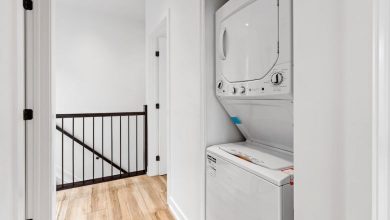Home Painting Tools: Brushes Vs Rollers

When it comes to painting your home, choosing the right tools can make a significant difference in the final result. While both brushes and rollers are commonly used for home painting projects, they each have their own advantages and disadvantages. In this article, we will explore the pros and cons of brushes and rollers to help you make an informed decision for your next painting endeavor.
Brushes: The Classic Choice
Brushes have long been the go-to tool for painting projects, and for good reason. They offer a level of control and precision that is unmatched by any other tool. With a brush, you can easily navigate corners, edges, and intricate details, ensuring that every nook and cranny receives an even coat of paint. This makes brushes particularly well-suited for trim work and intricate designs.
Furthermore, brushes allow for more flexibility when it comes to paint application. With a brush, you can layer paint to achieve a desired texture or create unique effects. Whether you prefer a smooth finish or a more textured look, brushes give you the freedom to experiment and customize your painting project.
However, using brushes does have its drawbacks. Painting with a brush can be time-consuming, especially when covering large areas. The small surface area of a brush means that it takes longer to cover a wall compared to using a roller. Additionally, brushes can leave behind visible brush strokes if not used properly. Achieving a smooth finish with a brush requires a steady hand and a skilled technique.
Rollers: The Time-Saver
Rollers, on the other hand, are a popular choice for their efficiency and speed. With a roller, you can cover large areas in a fraction of the time it would take with a brush. The larger surface area of a roller allows for quicker paint application, making it a great choice for painting walls and ceilings.
In addition to their speed, rollers offer a smooth and uniform finish. Unlike brushes, which may leave behind brush strokes, rollers distribute paint evenly across the surface. This makes rollers ideal for larger, flat surfaces where a consistent finish is desired.
However, using a roller does come with its own set of challenges. Rollers are not as adept at navigating corners and edges as brushes are. They can also be more difficult to control, particularly when working on intricate designs or trim work. If precision is important for your painting project, using a roller may require additional tools, such as a brush or a smaller roller, to achieve the desired outcome.
Making the Right Choice
When it comes to choosing between brushes and rollers for your home painting project, it ultimately depends on the specific requirements of the job. If you are looking for precision and control, brushes are the way to go. They excel at navigating corners, edges, and intricate details, allowing for a more customized finish. On the other hand, if efficiency and speed are your priorities, rollers are the clear winner. They are perfect for covering large areas quickly and achieving a smooth, uniform finish.
In many cases, a combination of both brushes and rollers may be the best approach. Using a brush for detailed work and a roller for larger surfaces can help you achieve the best of both worlds. Experimenting with different tools and techniques will allow you to find the perfect balance for your painting project.
In conclusion, when it comes to home painting tools, brushes and rollers each have their own strengths and weaknesses. The choice between the two ultimately depends on the specific requirements of your painting project. Whether you opt for the precision of a brush or the efficiency of a roller, with the right tools and techniques, you can transform your home with a fresh coat of paint.




